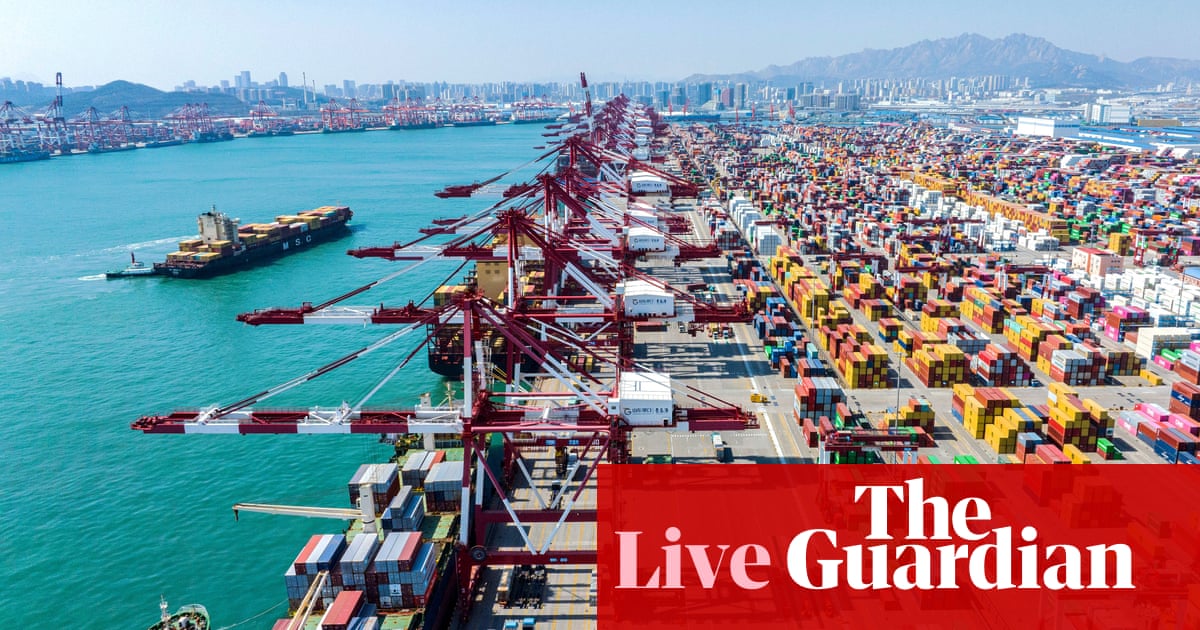Global Market Turmoil: Tariff Fallout Deepens
The global economy is facing increasing uncertainty as the fallout from escalating trade tariffs continues to deepen. Recent announcements and retaliatory measures have sent shockwaves through various sectors, impacting businesses, consumers, and international relations. This article delves into the current state of global market turmoil, examining the key contributing factors and potential consequences.
The Rising Tide of Protectionism:
The current climate of protectionism, fueled by trade disputes between major global powers, is at the heart of the market instability. Tariffs, initially implemented with the intention of protecting domestic industries, have triggered a cycle of retaliatory measures, creating a complex web of trade restrictions. This tit-for-tat approach has significantly disrupted established supply chains and increased the cost of goods for consumers worldwide.
-
US-China Trade War: The ongoing trade war between the United States and China remains the most significant driver of this turmoil. The imposition of tariffs on billions of dollars worth of goods has led to increased prices, reduced consumer spending, and uncertainty for businesses operating in both countries. This impact extends beyond the two nations, affecting global supply chains and investor confidence.
-
EU-US Trade Tensions: Disputes between the European Union and the United States over issues such as aircraft subsidies and digital services taxes have further exacerbated the situation. The imposition of tariffs on goods traded between these economic powerhouses adds another layer of complexity to the already fragile global trade environment.
-
Impact on Emerging Markets: Emerging markets are particularly vulnerable to the consequences of global trade wars. Fluctuations in currency exchange rates, reduced export demand, and decreased foreign investment can have devastating effects on their economies. This vulnerability highlights the interconnected nature of the global economy and the far-reaching impact of trade disputes.
Consequences of the Tariff Fallout:
The consequences of this deepening market turmoil are far-reaching and multifaceted:
-
Increased Inflation: Tariffs directly increase the cost of imported goods, leading to higher prices for consumers. This inflationary pressure can erode purchasing power and negatively impact economic growth.
-
Supply Chain Disruptions: The imposition of tariffs forces businesses to re-evaluate their supply chains, seeking alternative sources of goods and potentially incurring significant costs. This can lead to delays, shortages, and increased production costs.
-
Reduced Investment: Uncertainty surrounding trade policies discourages investment. Businesses hesitate to commit capital in an environment characterized by volatility and unpredictable regulations.
-
Geopolitical Instability: Trade disputes often escalate into broader geopolitical tensions, creating further uncertainty and negatively impacting global cooperation on other critical issues.
Looking Ahead: Navigating the Uncertainty:
The current global market turmoil presents significant challenges. However, several strategies can help mitigate the negative impacts:
-
Diversification: Businesses can diversify their supply chains to reduce reliance on single sources of goods.
-
Innovation: Investing in innovation and technological advancements can help businesses adapt to changing market conditions.
-
International Cooperation: Increased dialogue and cooperation among nations are crucial to finding solutions that promote free and fair trade.
The future of the global economy remains uncertain, but proactive measures and international collaboration are essential to navigate the challenges posed by the deepening tariff fallout. It's crucial for businesses and policymakers to adapt to this changing landscape and work towards a more stable and predictable global trade environment. This requires a long-term vision and a commitment to finding mutually beneficial solutions. Only then can we hope to mitigate the negative consequences and foster sustainable global growth.

